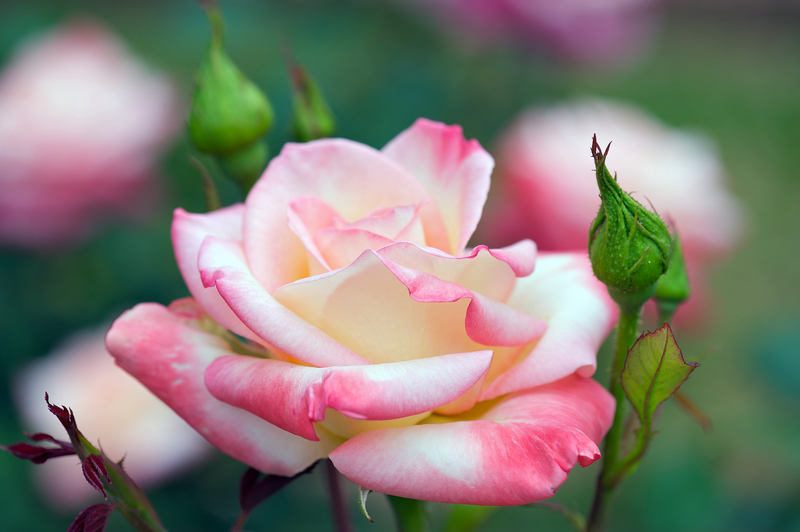Achieve a Weed-Free Garden with These 3 Tips
Posted on 25/08/2025
Achieve a Weed-Free Garden with These 3 Tips
Are you constantly battling stubborn weeds in your garden? Discover how to achieve a weed-free garden with our top three expert strategies. Learn approaches that not only create a beautiful, healthy landscape but also reduce tedious maintenance. With these comprehensive, actionable tips, you'll transform your garden into a weed-free paradise!
Why Is a Weed-Free Garden Important?
Maintaining a weed-free garden does more than just improve its appearance. Weeds compete with your plants for crucial resources such as nutrients, light, and water, ultimately harming their health and productivity. Unchecked, these invasive plants can harbor pests and diseases or even threaten native ecosystems. By employing effective weed control methods, you ensure your garden's vitality and longevity.

Top 3 Tips for Achieving a Weed-Free Garden
There are many approaches to garden weed prevention, but our expert-approved, tried-and-tested three tips will help you effectively eliminate weeds while supporting your plants' growth.
1. Mulch Like a Pro: Smothering Weeds Naturally
Mulching is among the most effective ways to create a weed-free landscape. By adding a layer of organic or inorganic material to your garden beds, you physically block sunlight and inhibit weed seed germination. Here's how to master mulching:
- Choose the Right Mulch:
- Organic mulches (such as wood chips, shredded leaves, pine needles, compost, or straw) gradually break down, enriching the soil as they suppress weeds.
- Inorganic mulches (such as landscape fabric, black plastic, or gravel) offer longer-lasting weed prevention for paths or permanent beds, although they do not improve soil quality.
- Apply the Mulch Correctly:
- Layer mulch about 2-4 inches deep on bare soil, leaving a few inches clear around plant stems to prevent rot.
- Replenish organic mulch as it decomposes--usually once or twice per season--to keep a consistent barrier against unwanted garden weeds.
- Bonus Tip: A pre-mulch application of newspaper (2-3 sheets thick) beneath the mulch adds an extra weed-smothering layer.
With proper mulching, not only do you stop weed seeds from sprouting, but you also improve moisture retention and soil health. It's a win-win on your way to a weed-free garden!
2. Smart Planting Strategies: Outcompete the Weeds
One overlooked approach to sustained weed prevention is strategic planting. By designing your garden to maximize ground coverage, you make it harder for weeds to establish:
- Densely Plant Ground Covers:
- Low-growing plants such as creeping thyme, sedum, or clover form a living carpet, blocking sunlight and outcompeting emerging weeds.
- For vegetable gardens, use "interplanting" or "companion planting" techniques to minimize exposed soil between rows.
- Choose Vigorous Perennials:
- Perennials with wide foliage (hosta, daylily, geranium) create natural shade at soil level, leaving little room for unwanted weeds to thrive.
- Plant in curved beds rather than rows--curves reduce the amount of border space where weeds typically invade.
- Employ Succession Planting:
- After harvesting, replant new crops or use cover crops (like annual rye, clover, or buckwheat) to keep soil covered at all times.
A well-planned garden layout is not only more productive and visually appealing but is also one of the most natural methods to cultivate a weed-free garden.
3. Regular Maintenance & Early Weed Removal: Stay Proactive
Despite your preventive measures, some weeds will inevitably sneak in. The key to a consistently weed-free garden is vigilance and early intervention:
- Hand-Pull Weeds Routinely:
- Inspect your garden weekly--removing weeds early (before they flower and set seed) stops infestations before they start.
- Pull weeds after rain or watering, when soil is moist and roots are easier to remove.
- Use the Right Tools:
- Small hoes, dandelion diggers, or hand forks are excellent for uprooting taprooted and perennial weeds with minimal soil disturbance.
- For crowded beds, specialized tools like "weeders" or narrow-bladed knives let you target weeds without harming nearby plants.
- Never Let Weeds Go to Seed:
- Even if you can't pull them immediately, cut off seed heads to prevent new generations of weeds from invading.
- Mulch & Replant Bare Spots:
- As soon as a crop finishes or a plant dies, cover the bare soil with mulch or new plants to deny weeds the space to grow.
By making weed monitoring a regular habit, you'll keep your weed-free garden in pristine condition with significantly less effort.
Bonus Strategies for Sustainable Weed Control
Looking for extra ways to fortify your weed-free gardening efforts? Integrate these advanced techniques for even better results:
Solarization
- In early summer, cover affected soil with clear plastic sheeting for 4-6 weeks. The sun's heat will "bake" weed seeds, pests, and diseases, dramatically reducing their future presence.
Use of Pre-Emergent Herbicides (With Care)
- Corn gluten meal and selected pre-emergents prevent weed seeds from germinating. Use only on new beds or before planting seeds--never in established beds, as they can impact desired seedlings too.
Water Smartly
- Deliver water directly to plant roots via drip irrigation or soaker hoses. Minimizing water on bare soil keeps weed seeds from thriving while conserving resources.
Understanding Your Weeds
- Identify persistent weed species so you can target them effectively. Some, like bindweed or quackgrass, require more persistent removal and barriers to fully eradicate.
Common Weeding Mistakes to Avoid
- Ignoring Early Growth: Young weeds are much easier to eliminate--address them as soon as they appear.
- Tilling Too Often: Over-tilling brings buried weed seeds to the surface, encouraging new outbreaks.
- Overusing Herbicides: Excessive chemical use can harm beneficial garden life and cause resistance in weeds. Prioritize natural, manual methods in most cases.
- Leaving Roots Behind: Many perennial weeds regrow from root fragments. Ensure you fully uproot these plants when removing them.
Creating Your Personalized Weed-Free Garden Plan
Every successful weed-free garden starts with understanding your environment and planning accordingly. Take these practical steps to tailor a management strategy:
- Assess your garden's soil, light, and moisture conditions--are there specific weed hotspots?
- Choose mulches, ground cover plants, and crops that thrive in your region and match your aesthetic preferences.
- Design beds minimizing bare soil and maximizing plant density.
- Schedule time each week for a quick garden "walkthrough" to spot and remove early weeds before they spread.
Benefits of a Weed-Free Garden
Investing your time and care into eliminating weeds from your garden pays off with numerous advantages:
- Healthier, more productive flowers, vegetables, and ornamentals.
- Improved soil health from regular mulching and organic matter.
- Fewer pests and diseases, as many invasive weeds are insect and disease hosts.
- Reduced need for herbicides or chemical treatments, supporting eco-friendly gardening.
- A neat, attractive, and enjoyable garden requiring less maintenance in the long run.

Frequently Asked Questions: Keeping Gardens Weed-Free
Can you ever achieve a completely weed-free garden?
No garden is 100% immune to weeds, but consistent application of these tips brings you exceptionally close. Vigilance and maintenance are essential to long-term weed control.
Is hand-weeding better than chemical weed killers?
Whenever possible, hand-weeding and mulching are safer for your garden's ecosystem. Reserve chemical solutions only for severe infestations and always follow instructions to safeguard your soil and plants.
How often should I reapply mulch?
Organic mulch typically breaks down, so replenish it every 6-12 months or when the layer thins. Inorganic mulch can last several years, but check for displaced areas after storms or heavy gardening activity.
What is the fastest way to clear a weed-infested area?
First, mow or cut weeds close to the ground. Cover with thick layers of cardboard and mulch, or solarize for several weeks before replanting. Persistent manual removal may be required for tough perennial weeds.
Conclusion: Grow a Flourishing Weed-Free Garden with Confidence
Achieving a weed-free garden is within reach for every home gardener. By mastering mulching, planting strategically, and maintaining vigilant weed removal habits, you'll cultivate healthy, beautiful spaces with ease. Combine these approaches with occasional bonus methods--like soil solarization or pre-emergents--for long-lasting, sustainable success.
Ready to transform your garden and say goodbye to weeds forever? Start today with these three proven tips, and revel in the beauty and productivity of a truly weed-free landscape all season long!

